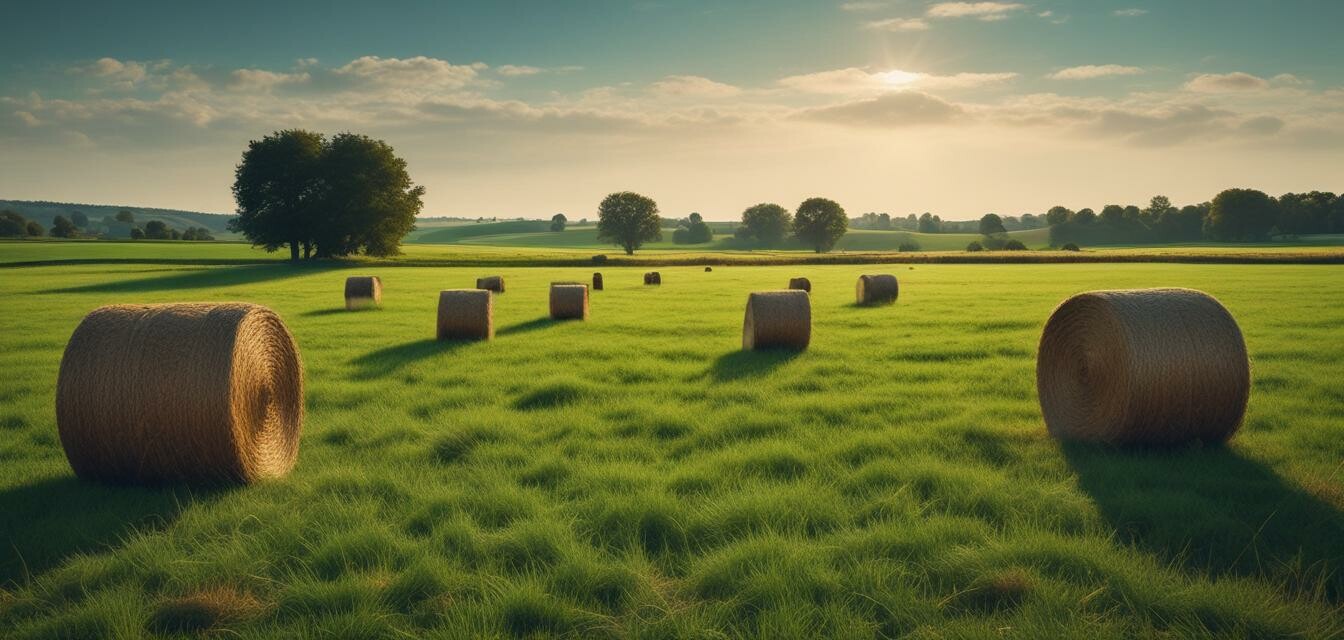
A guide to choosing the best hay for your horse
Key takeaways
- Understand the different types of hay available for horses.
- Look for quality indicators such as color, scent, and presence of dust.
- Assess the nutritional needs of your horse based on its age, weight, and activity level.
- Store hay properly to maintain its quality.
Choosing the best hay for your horse is crucial for its overall health and well-being. Hay is a primary source of fiber and essential nutrients, and selecting the right type can significantly impact your horse's dietary needs. This guide will help you navigate the various options available and what to look for in terms of quality and nutritional content.
Types of hay
There are several types of hay available, each with unique characteristics that cater to different equine dietary requirements. Below are the most common types:
| Type of hay | Description | Ideal for |
|---|---|---|
| Timothy Hay | Grass hay that is high in fiber, ideal for adult horses. | Adult horses and ponies |
| Orchard Grass Hay | Soft and sweet-smelling hay that is palatable for horses. | Horses that are picky eaters |
| Alfalfa Hay | A legume hay high in protein, calcium, and energy. | Young, growing, or pregnant horses |
| Bermudagrass Hay | A grass hay that is high in nutrients, often used in warm climates. | Performance horses |
What to look for in quality hay
When selecting hay, you want to ensure you're getting the best quality possible. Here are some indicators to look for:
- Color: Quality hay should be bright green and free from brown or yellowish hues.
- Smell: Fresh hay should have a pleasant, grassy aroma. Avoid hay that smells musty or moldy.
- Dust and debris: Ensure the hay is clean and free from excessive dust or foreign materials.
- Texture: Hay should feel soft and pliable rather than dry and brittle.
Assessing your horse's nutritional needs
Understanding your horse's unique dietary needs is essential for selecting the right hay. Factors like age, weight, and activity level play a key role in determining the best choice for your horse. Here are some tips:
- Age: Young horses require more protein and energy, while older horses may need easier-to-chew hay.
- Weight: Maintain a healthy weight to prevent obesity or deficiency by adjusting hay types.
- Activity Level: Performance horses will need grass or legume hays that offer more energy.
Storing hay properly
Proper storage is vital in preserving the quality of the hay you choose. Follow these guidelines for storage:
- Keep hay in a dry, well-ventilated area to prevent mold.
- Avoid stacking hay too tightly to allow for airflow.
- Cover hay with a tarp or other weatherproof cover to protect it from rain and moisture.
- Rotate your hay supply, using the oldest first to ensure nothing goes to waste.
Conclusion
Choosing the right hay for your horse is not just about the type, but also about understanding your horse's specific needs and quality indicators to look for in hay. Ensuring that your horse has access to quality hay will contribute significantly to its overall health and happiness. For more information on caring for your horse, check out our Rider Tips and Advice section.
Pros
- Quality hay improves overall health and condition of horses.
- Different types cater to various dietary needs.
- Properly stored hay maintains its nutritional value.
Cons
- Poor quality hay can lead to health issues.
- Cost can be a factor for some horse owners.
- Not all hay is suitable for every horse.
